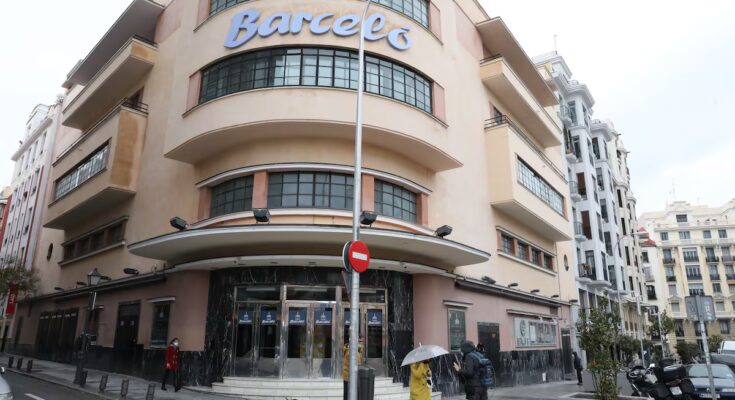The Madrid nightclub Teatro Barceló received a judicial oxygen tank this week. The court confirmed the precautionary measures requested by the promoter of the property and paralyzed, for now, the seal ordered by the City of Madrid. The closure was decreed weeks ago as a penalty for twice exceeding the permitted capacity of 990 people in 2023, by around 600 people, according to the Municipal Police. Tomorrow the room will open normally.
After learning of the resolution, the delegate for Urban Planning, Environment and Mobility, Borja Carabante, defended the seal in response to “two serious infringements that compromised the safety of users by exceeding the permitted capacity”. His statements inflamed the minds of the Leisure Platform. Hoteliers maintain that “Madrid’s nightlife is safe” and highlight the “arbitrariness” of the Activities Agency (ADA) in applying the legislation as the real problem.
The conflict over nightclub capacity goes back a long time. It dates back to 1997, when the City Council, then under the mandate of the popular José María Álvarez del Manzano, approved the General Urban Plan (PGOU). That document established “zoning typologies” that assigned a base capacity depending on the type of business and allowed exemptions of up to 600 or more people in peripheral areas. “In Madrid the capacity is calculated on the map, not on the safety of the premises”, criticizes Vicente Pizcueta.
This means that two rooms with the same dimensions, emergency exits and evacuation plan can have different capacities precisely because they are located in different neighborhoods. In the capital, for almost 30 years, the number of people allowed in a room does not only depend on technical safety criteria, but also on its location.
For hoteliers, this status quo The consequences are clear: it penalizes businesses in the center and favors, to a certain extent, those on the periphery. In neighborhoods like Vallecas, where ZPAEs – special noise protection zones – regulate hours but do not act with the same severity, venues can get a more generous capacity. In the Center, however, where the Barceló Theater is located, even spaces with sufficient meters and exits encounter an administrative limit that can only be modified if the administration develops the ERIU, the procedure that allows capacity to be adjusted according to technical safety criteria.
According to Noche Madrid, the association that brings together nightlife entrepreneurs, the Activities Agency refuses to process these increases in Centro and Chamberí, two ZPAE areas that are particularly profitable for the sector.
Vicente Pizcueta, spokesperson for the association, is satisfied with the court’s decision: “If there had been the slightest risk, it is impossible that a very precautionary measure would have been granted.”
The City Council avoids fueling controversy. “The City Council respects the rules and respects judicial decisions,” said a spokesperson for the Department of City Planning. The hospitality industry, however, accuses the ADA of repeatedly failing to meet Carabante’s commitment to develop a new capacity statement that ends the current legal void and clearly defines the safety criteria applicable to premises.
Pizcueta assures that Carabante promised Noche Madrid a draft of that hypothetical reform. “We had two meetings: September 10 and October 29. But the document never arrived.”
The case of the Barceló Theater is not the only one. In June, the Cocó hall, on Alcalá street, was sealed after an inspection found 898 people in a space with an official capacity of 520 people. The administration ordered the closure and opened a disciplinary file. However, the same dossier includes a technical report which, applying the Technical Building Code, calculates that the premises have the capacity to evacuate more than 1,400 people. In August the court also ordered precautionary measures in favor of Cocó. The contradiction is evident: the Fire Brigade believes that the space is safe for many more participants, but the Agency, relying on the ZPAE, keeps the administrative capacity below.



